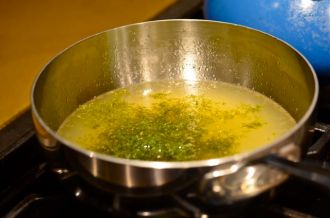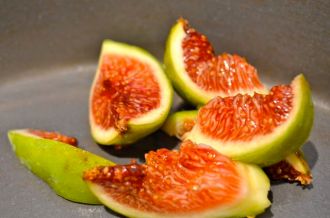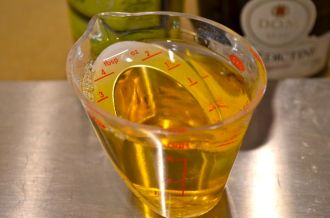 One of the great, ongoing arguments of cocktail geekery concerns the classic Gimlet. You see, some folks say a Gimlet is just Rose’s Lime Juice (originally Rose’s Lime Cordial) and gin. Other folks say a gimlet can be gin, fresh lime juice and sugar or maybe gin, Rose’s and then some fresh lime juice. Now this may seem somewhat trivial, but this kind of esoterica gives
One of the great, ongoing arguments of cocktail geekery concerns the classic Gimlet. You see, some folks say a Gimlet is just Rose’s Lime Juice (originally Rose’s Lime Cordial) and gin. Other folks say a gimlet can be gin, fresh lime juice and sugar or maybe gin, Rose’s and then some fresh lime juice. Now this may seem somewhat trivial, but this kind of esoterica gives drinkers “cocktailians” an excuse to have more drinks…all in the name of “research”. Nice trick, huh?
Regardless of the recipe, the Gimlet is a good cocktail that is also very easy to make. And since gin and Rose’s are available (and shelf stable) all over the world, it is nice to have a cocktail you can enjoy almost anytime/anywhere (joining classics like the gin and tonic and Scotch and soda). And even with Rose’s in the US being pretty artificial (corn syrup and plenty of preservatives and colors), the classic Rose’s and gin Gimlet is still served in plenty of good bars.
 But the Rose’s ingredient list did get us thinking that we could probably make our own lime cordial, and since we have a bunch of lemons we could make lemon cordial as well. So what is a cordial? Basically, a cordial is a mixture of concentrated citrus juice and sugar, usually also flavored by the citrus zest. Lime is the most popular cordial, but lemon and grapefruit cordials are also quite good.
But the Rose’s ingredient list did get us thinking that we could probably make our own lime cordial, and since we have a bunch of lemons we could make lemon cordial as well. So what is a cordial? Basically, a cordial is a mixture of concentrated citrus juice and sugar, usually also flavored by the citrus zest. Lime is the most popular cordial, but lemon and grapefruit cordials are also quite good.
 What is the difference between a cordial and a citrus syrup (like sour mix or oleo saccharum)? Most cordials are reduced by half using heat, while most syrups are not reduced or are made using “cold” methods. In general, syrups will have fresher, lighter flavors, while cordials will have a stronger more “candyish” flavor. We like both syrups and cordials in cocktails, but find that a combination of cordial and fresh juice adds extra layers of flavor to cocktails and house-made sodas.
What is the difference between a cordial and a citrus syrup (like sour mix or oleo saccharum)? Most cordials are reduced by half using heat, while most syrups are not reduced or are made using “cold” methods. In general, syrups will have fresher, lighter flavors, while cordials will have a stronger more “candyish” flavor. We like both syrups and cordials in cocktails, but find that a combination of cordial and fresh juice adds extra layers of flavor to cocktails and house-made sodas.
 As for making citrus cordials, it’s easy (we adapted a recipe from Imbibe). Zest and juice some citrus, heat the juice with sugar, let it reduce by half and then cool, add zest and steep, then strain. From there, you can make gimlets (and a very good riff on the Margarita, btw) with your lime cordial and some fresh juice. With the lemon cordial we suggest you make the best whiskey sour of your life.
As for making citrus cordials, it’s easy (we adapted a recipe from Imbibe). Zest and juice some citrus, heat the juice with sugar, let it reduce by half and then cool, add zest and steep, then strain. From there, you can make gimlets (and a very good riff on the Margarita, btw) with your lime cordial and some fresh juice. With the lemon cordial we suggest you make the best whiskey sour of your life.
 And if you aren’t feeling boozy, the cordials are an easy base for tasty sparkling limeade / lemonade. We suggest 1 part cordial and 1 part juice to 3-4 parts sparkling water. Regardless, once you make some citrus cordial, it doesn’t seem to stick around very long- there are just too many tasty things you can make.
And if you aren’t feeling boozy, the cordials are an easy base for tasty sparkling limeade / lemonade. We suggest 1 part cordial and 1 part juice to 3-4 parts sparkling water. Regardless, once you make some citrus cordial, it doesn’t seem to stick around very long- there are just too many tasty things you can make.
The Classic Gimlet:
Ingredients:
- 2 oz. dry gin
- 3/4 oz. lime cordial (Rose’s Lime Juice)
Assemble:
- Combine gin and cordial in a cocktail shaker with ice. Shake until well-chilled and strain into a chilled cocktail glass or coupé, serve.
—–
Modern Gimlet:
Ingredients:
- 2 oz. dry gin
- 3/4 oz. lime cordial (homemade, see below)
- 3/4 oz. fresh lime juice
Assemble:
- Combine gin, cordial and juice in a cocktail shaker with ice. Shake until well-chilled and strain into a chilled cocktail glass or coupé, serve.
—–
Putney Farm Whiskey Sour:
Ingredients:
- 2 oz. bourbon
- 3/4 oz. lemon cordial (homemade, see below)
- 3/4 oz. fresh lemon juice
- 1 dash Angostura bitters
Assemble:
- Combine bourbon, cordial, juice and bitters in a cocktail shaker with ice. Shake until well-chilled and strain into a chilled cocktail glass or coupé, serve.
—–
Lime Cordial:
Ingredients:
- 12 limes (or enough for 1 1/2 cups of juice)
- 1 1/2 cup sugar
Assemble:
- Zest the limes, set zest aside.
- Juice the limes until you have 1 1/2 cups of juice. Add juice to a saucepan and then add sugar. Bring juice and sugar to a low simmer and reduce by half, stirring occasionally. Once reduced by half, take off heat and cool for 10 minutes.
- Add the zest to the pan, stir and let steep for 10 minutes. Strain the cordial, removing all zest, into a sterilized glass container. Will keep for 2 weeks in the fridge.
—-
Lemon Cordial:
Ingredients:
- 8-10 lemons (or enough for 1 1/2 cups of juice)
- 1 cup sugar
Assemble:
- Zest the lemons, set zest aside.
- Juice the lemons until you have 1 1/2 cups of juice. Add juice to a saucepan and then add sugar. Bring juice and sugar to a low simmer and reduce by half, stirring occasionally. Once reduced by half, take off heat and cool for 10 minutes.
- Add the zest to the pan, stir and let steep for 10 minutes. Strain the cordial, removing all zest, into a sterilized glass container. Will keep for 2 weeks in the fridge.













































